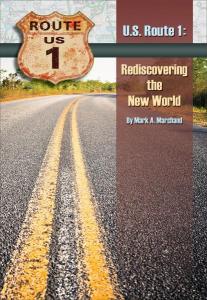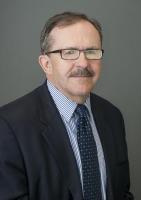Mark A. Marchand: U.S. Route 1
For this column, NASW book editor Lynne Lamberg asks NASW authors to tell how they came up with the idea for their book, developed a proposal, found an agent and publisher, funded and conducted research, and put the book together. She also asks what they wish they had known before they began working on their book, what they might do differently the next time, and what tips they can offer aspiring authors. She then edits the A part of that Q&A to produce the author reports you see here.
Publication of NASW members’ reports in Advance Copy does not constitute NASW’s endorsement of their books. NASW welcomes your comments, and hopes this column stimulates productive discussions.
U.S. ROUTE 1: REDISCOVERING THE NEW WORLD
Mark A. Marchand
Amazon, June 28, 2018, $9.50 (paper), $1.95 (ebook)
ISBN-10: 1981097449; ISBN-13: 978-1981097449
Marchand reports:
While I teach in the Journalism Program at the University at Albany and freelance science articles, I longed to explore the country along the East Coast through the lens of the first real U.S. highway, Route 1, established in 1926. The 2,440 mile-long North/South highway is as long as the more famous Route 66, but unlike Route 66, it’s still in use. Yet little has been written about it.
I wondered why the highway, which started with foot paths and stagecoach trails for pioneers struggling to start a new country, was laid out where it was. The answer lays in the geographical feature known as the fall line, the farthest areas inland a boat could reach via waterway. Terminating points for rivers and streams became communities linked by north/south paths that eventually became Route 1.
I started out thinking of a magazine article and ended up with a book. I spent hours experimenting with how I could frame the story so it wasn't just a daily narrative of my road trip.I traveled the entire length of the East Coast on Route 1, posting accounts on Facebook, and occasionally being interviewed by news outlets serving areas on my route, such as those here and here. One of the many fascinating sights along the way was the easternmost location in the lower 48 states, Quoddy Head, Maine, where one can be the first in the country to see the sun rise.
I wish I had spent more time pitching agents. I made some initial forays, but when I received little response, decided to move ahead with the two-year writing process and self-publish the book.
After returning from my trip, I spoke several times with the official historian of the Federal Highway Administration in Washington, DC, who also sent me historical documents. I tracked down a former National Geographic photographer who published a 1984 photo essay of his travels along Route 1. Finally, I hired a copy editor to go over the manuscript. I’m still learning about book marketing.
Contact info:
- Mark Marchand, 518-928-8597, markmarchand56@gmail.com
- Blog: https://markupstateny.wordpress.com
NASW members: will your book be published soon? Take advantage of this opportunity for shameless self-promotion. Submit your report for Advance Copy.
Tell your fellow NASW members how you came up with the idea for your book, developed a proposal, found an agent and publisher, funded and conducted research, and put the book together. Include what you wish you had known before you began working on your book, or had done differently.
See https://www.nasw.org/advance-copy-submission-guidelines.
Thinking of writing a book? If you are a NASW member, you may access a list of more than 150 books and online resources to help you craft your book proposal, find an agent and funding sources, negotiate your contract, learn about self-publishing, publicize and market your book, and more at https://www.nasw.org/article/write-book.
Send book info and questions about book publishing to Lynne Lamberg, NASW book editor, llamberg@nasw.org.





